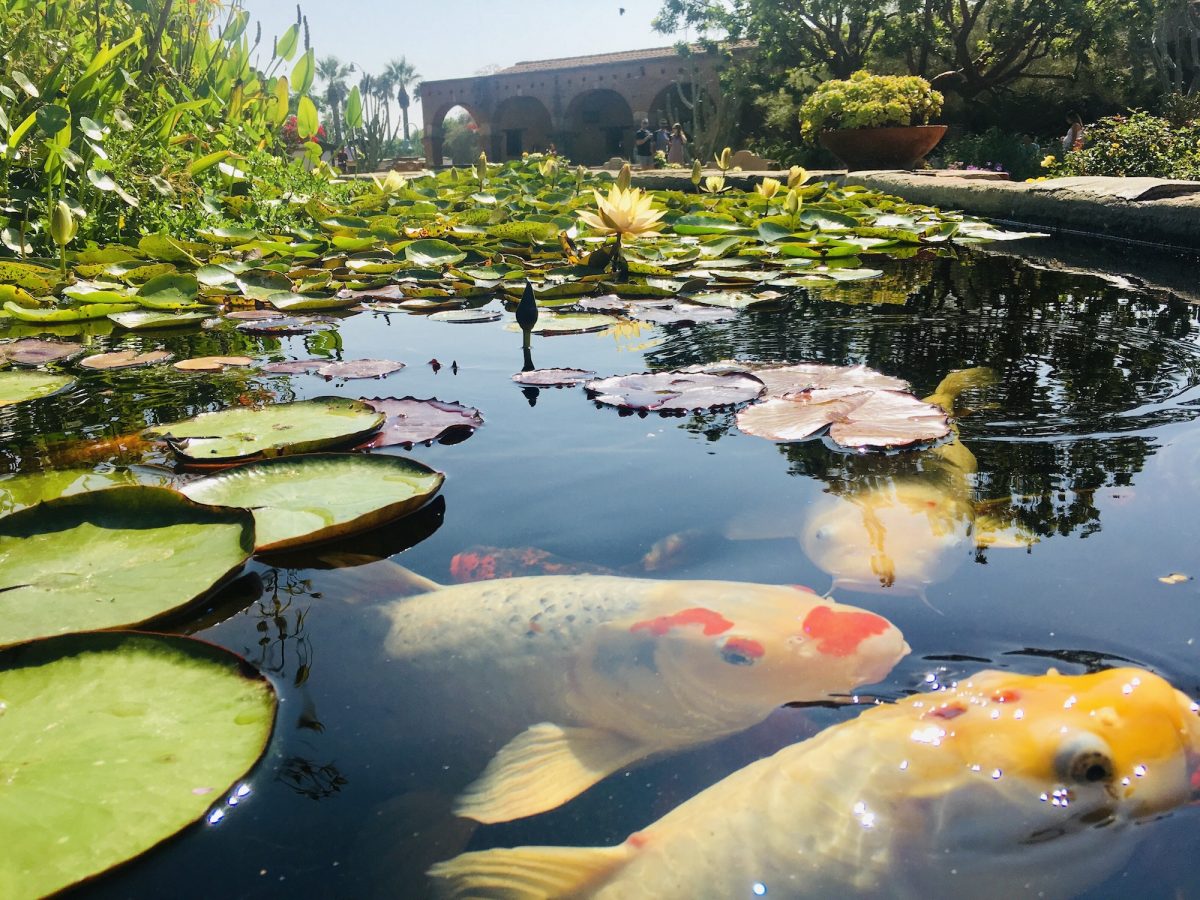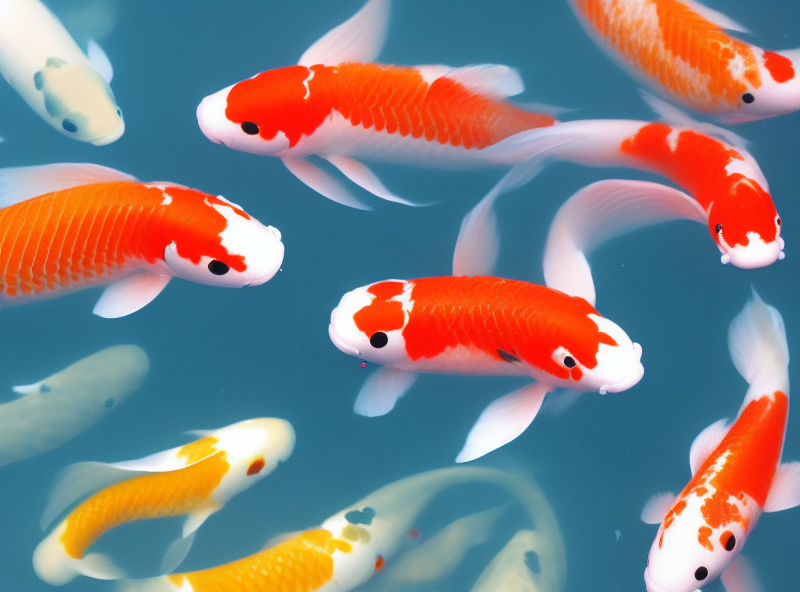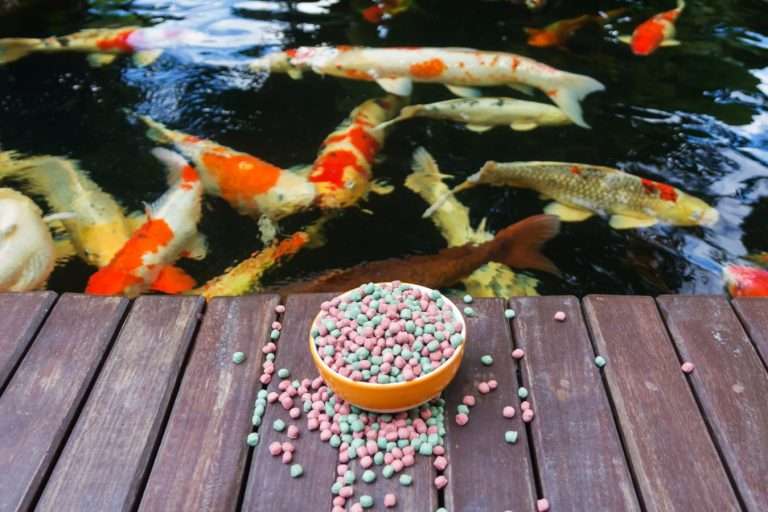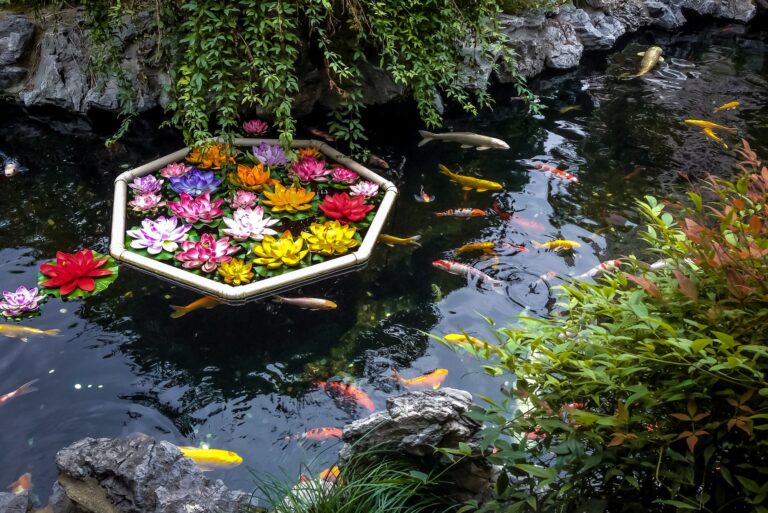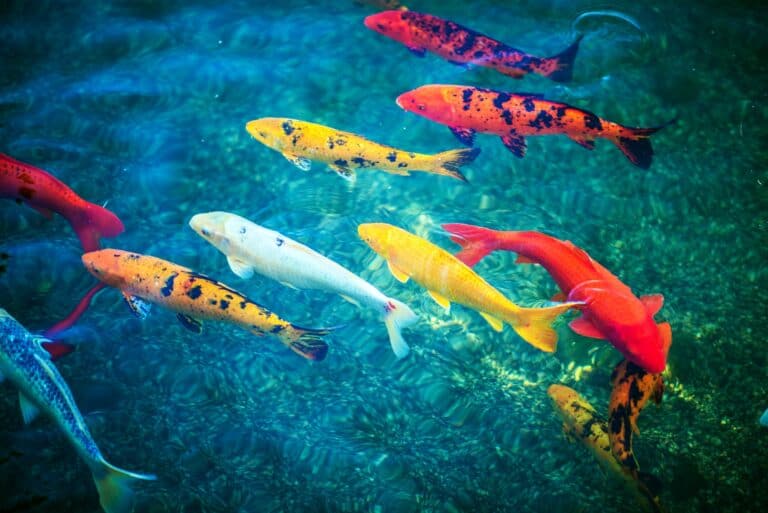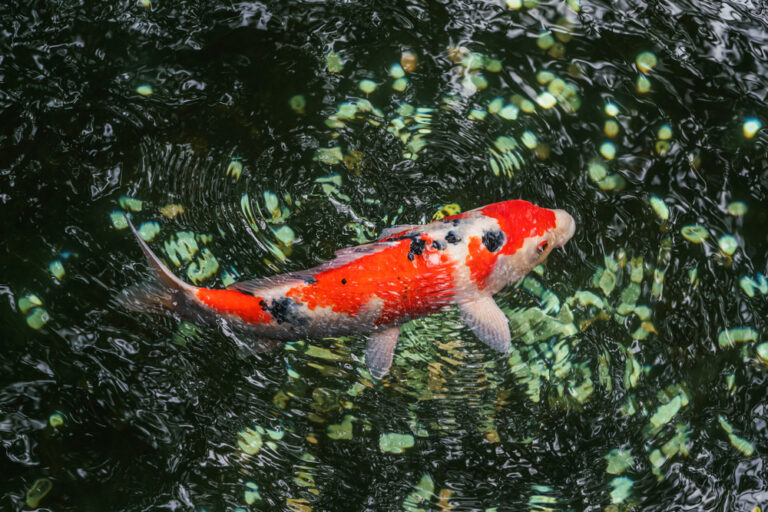Breeding Koi Fish For Profit
If you have a Koi pond, there may come a time when you consider breeding koi fish for profit. Koi fish are a symbol of peace, tranquility, and prosperity. They have been used for centuries in art, literature, and culture to represent strength and perseverance. To those who breed Koi profitably, it’s an opportunity to share their passion while making money. It takes dedication and skill to produce Koi successfully, but this can be financially and emotionally rewarding. I will explain how you can benefit from breeding Koi for profit in this article.
Once you have mastered the basics of successful koi breeding and set up an optimal environment for your broodstock, it’s time to start earning money! By carefully managing stock levels and effectively marketing your services or products, you could soon profit from selling koi or offering related services such as pond maintenance or advice. There is no limit to what you can achieve regarding profitable koi breeding. All it takes is patience, hard work, and knowledge about these fascinating little critters!
Breeding Koi Fish for Profit
Following ‘s setup of an incubator, it is time to focus on how to breed koi fish for profit. While there are many breeds of this species, they all share common traits that make them desirable and profitable options for breeding.
To achieve success in koi breeding, an expert needs to understand their unique characteristics, such as:
- Coloration diversity
- Variety of fin shapes and sizes
- Adaptability to different climates
- Sustainability through proper care
- Ability to survive diverse environmental conditions
These traits can help you determine which type of Koi will be most successful in your area or climate. For example, if you have cold winters, you would look at varieties like Kohaku’s or Kigoi’s with shorter scales and fins. On the other hand, those living in warmer climates may want to consider Koi with longer fins, such as Shusui’s or Kawarimono’s, since they thrive better under higher temperatures. Understanding the importance of coloration diversity and sustainability will also play a role in ensuring profitability from your efforts.
To start breeding koi fish for profit, research what types of fish are available and which ones will bring the greatest return on investment. Investing in quality feeders, tanks, filters, and pumps is also essential so that your fish stay healthy.
Finally, developing relationships with retailers or wholesalers who will purchase your fish is essential because it provides more potential outlets for selling. With these steps taken into consideration, along with dedication and hard work, you are ready to breed koi fish for profit.
Selecting Breeding Stock
Selecting the best fish to breed for profit is essential. It would be best if you got the best quality fish possible. When choosing potential breeders, look for healthy individuals with good coloration and body shape. Find those with desirable traits such as long fins or unusual patterns. Avoid any fish showing poor health or deformities.
It’s also important to consider genetic diversity when choosing breeding stock. Don’t just select fish from one source; try to mix up lines so that you introduce new genetics into your broodstock. This should help reduce the risk of inbreeding and ensure more significant genetic variability among your koi population.
To maximize profits, choose a selection of male and female koi most desired by hobbyists – those with unique colors and shapes or other desirable traits can fetch higher prices. You can produce high-quality fry with careful selection, satisfying even the most discerning customer!
Setting Up A Hatchery
Setting up a hatchery takes careful planning. The first step is to select the site of your hatchery. When choosing where to shop, you should consider factors such as water supply, temperature range, available space, and sunlight exposure. You’ll also want to research local regulations regarding running a business in that area – make sure everything meets the code before investing too heavily!
Once you have chosen the spot, start looking into acquiring tanks or ponds for housing the fish. Ensure all tanks are well-maintained with clean water at the proper temperatures and pH levels to stay comfortable and stress-free! If possible, build natural-looking environments featuring rocks, plants, and other features – this will help create an ideal environment for raising healthy koi specimens.
The fun part comes: stocking your hatchery with quality koi breeds from trusted sources. Be sure to do your due diligence on any suppliers you’re considering; look into their backgrounds and reviews from others who’ve bought from them before deciding. Keeping only high-quality stock will ensure that each generation of Koi your hatchery produces is strong and healthy! With these steps, you can start breeding koi fish for profit.
Preparing For Breeding Season
Once you have the breeding stock, it is time to prepare for the breeding season. A successful breeder always plans. After all, this is a business venture, too, hobby or not. To make sure everything goes according to plan during the breeding season, here are some steps I suggest:
| **Step | Explanation** |
|---|---|
| 1) Check Your Gear | Ensure all your equipment, such as tanks, pumps, buckets, etc., is in working order and ready to go. |
| 2) Quarantine New Koi | If you are adding new koi to your existing collection, quarantine them before introducing them into the main pond. This will help prevent any disease from spreading throughout your fish population. |
| 3) Monitor Water Quality | Keeping an eye on water parameters like pH, nitrite, and ammonia levels can ensure optimal conditions for spawning success. |
Caring For Fry
Caring for koi fry can be a challenge, but it’s also gratifying. To ensure your brood is healthy and hardy, there are some basic steps you’ll need to take. First of all, keep the water clean. Koi fry is particularly vulnerable to poor water quality, so regular testing and maintenance are essential. As they grow, you should also vary their diet with high-quality feed formulated especially for them. This will help strengthen their bones and muscles and prepare them for adulthood.
The second important factor in caring for fry is providing plenty of space for growth. The more room they have to move around in, the healthier they’ll be—so make sure your tanks or ponds are big enough to accommodate them when necessary. You may even want to add dividers if one tank has multiple species; this will reduce competition among the fish while helping maintain optimum health levels throughout their life cycle.
Genetics And Coloration
Breeding koi fish is an art form that requires an understanding of genetics and how they affect the look of each fish. The goal should be to create unique patterns and colors that stand out. This can be done by focusing on traits such as eye size, fin length, scale pattern, body shape, and color intensity.
When breeding koi fish for profit, research the different varieties available and their associated characteristics so you can combine them in ways that will produce desirable results. It’s also essential to understand the various types of mutations that may occur during mating since this could drastically alter the appearance of your fry. By knowing these things beforehand, you can make informed decisions about which pairings would yield desired outcomes.
Feeding Requirements
Feeding your Koi is essential for their health and growth. As breeders, we understand that the nutritional needs of each fish vary. That’s why providing a balanced diet with various food sources is important. is essential
When starting, you can feed your koi commercial fish food, such as pellets or flakes. You’ll need to experiment with brands and types until you find what works best for your specific population. Once established in your pond, you should supplement their diet with fresh fruits and vegetables, like melon rinds, cucumbers, lettuce, and peas. This will help keep them healthy while providing additional nutrients necessary for their development.
In addition to regular meals, be sure to offer treats occasionally. Koi love live foods like bloodworms and brine shrimp; these are not only tasty but also full of protein which helps promote strong bones and fins. Remember that some people have allergic reactions when handling these items – so please take precautionary measures when feeding them! With proper nutrition and care, you’ll be able to reap the rewards of successfully breeding koi for profit!
Keeping Records
Now that you have the feeding requirements of your koi fish figured out, it’s time to move on to another essential aspect of breeding these beautiful creatures for profit: keeping track of records. As any successful koi breeder will tell you, if you don’t keep accurate records, they’re just spinning your wheels—and wasting lots of money.
Yes, I know what some of you may think: Keeping records? But why? That sounds boring! Let me assure you that nothing could be more important., It helps ensure that each generation is healthier. Plus, having a sound system allows you to monitor growth rates and ensure that all necessary steps are taken during critical development periods. Trust me when I say this: Tracking records is essential!
So how should one go about setting up an adequate record-keeping system? First, I recommend creating a spreadsheet or database with data points such as size (lengths/weights), water temperatures, dissolved oxygen levels, food preferences, etc. This way, you can quickly analyze trends and look for potential problems before they become too serious. Additionally, taking notes after every significant event (such as spawning) can provide invaluable insight into future generations’ health and vigor, leading to even more profits down the line!
Selling Strategies
Once a breeder has established their koi farm, they will want to know where they can sell koi fish. Consider the local market and what customers seek to maximize profits. Is essential. Here are some strategies that can help ensure success:
First, building relationships with other breeders, pet stores, and retailers specializing in aquatic life will enable you to increase your customer base and provide access to more potential buyers. Additionally, attending regional events such as aquarium shows or hobbyist conventions can be invaluable for connecting with experts within the industry who may be interested in buying from you.
Second, offering discounts on bulk orders is an excellent way to attract new customers while encouraging existing ones to purchase larger quantities of fish. It would be best if you also considered joining online forums related to koi keeping so you can reach out directly to people seeking advice about reputable sellers in the area. Providing helpful information and resources could lead them back to your website, where they may purchase.
Finally, having a transparent pricing structure is critical when selling koi fish profitably. Being upfront about costs associated with shipping ensures clients understand what they’re paying for.
Finding Reliable Buyers
Finding reliable buyers for your koi fish can be like searching for a needle in a haystack. But once you see these particular customers, they will become the lifeblood of your koi breeding business. Here are three tips to help you locate trustworthy buyers:
- Utilize online marketplaces such as KoiFishMarket.
- Network with fellow hobbyists and breeders with experience selling their own.
- Contact pet stores or aquatics shops interested in stocking your koi fish.
No matter your route, it would be best to create relationships with potential buyers, so they feel comfortable purchasing from you. Make sure that any agreements are made clear upfront; this way t, there’s no confusion about how much money each side needs to midriff the sale. Also, providing quality customer service and excellent products means repeat customers.
By networking with other breeders and utilizing online resources, finding trustworthy buyers for your Koi is no longer challenging. With some research and effort, you’ll soon build an extensive network of loyal customers eager to buy from you.
Pricing Guidelines
Okay, just how much can you sell koi fish for? And, do you need a license to sell koi fish? The answer is it depends.
As a breeder, you’ll want to ensure that fish is priced according to quality and characteristics. Generally speaking, there are three tiers of pricing: high-quality show specimens, tank-raised breeders, and lower-grade Koi.
First, let’s start with show specimens. These fishes will have exceptionally vivid patterns and may even bear awards. The price tag of these ko koi will be top dollar! Potential buyers should consider spending between $1,000 – $10,000 depending on the size and type of Koi.
Next up are tank-raised fish which still exhibit desirable features. Prices here typically range from $200 – $700 per individual fish.
Lastly, we come to pet Koi—these can be slightly less expensive than either show or tank-raised since they don’t necessarily have striking colors or patterns (though some might). For these, prices generally fall somewhere around $10 -150 dollars apiece. They’re perfect for those who keep Koi as pets without worrying about entering them into competitions.
Tax Implications
IUnderstandingthe tax implications associated with any business venture is critical, and koi breeding is no different. Taxes are an essential part of koi breeding for profit. To ensure you stay compliant with federal regulations, it’s best to consult a qualified accountant or financial advisor before starting.
Income from selling koi fish can be subject to income and self-employment taxes, depending on how your business is structured. For example, if you’re o sole proprietor, all profits will be subject to income taxes at the applicable rate. However, if you decide to incorporate your business in some way, such as setting up a Limited Liability Corporation (LLC), only the portion allocated to shareholders would be taxed as personal income. At the same time, other expenses related to running the company may qualify for corporate deductions.
It’s also important to keep records of all transactions so they can be quickly reported on your annual returns. This includes everything from purchase orders and receipts for buying feed and supplies to invoices for sales throughout the year. Keeping accurate records will save time when filing taxes each year and avoid any potential problems with auditing or overpayment penalties.
WProperplanning, and understanding these key tax concepts can help ensure success in this rewarding hobby-turned-business opportunity!
Conclusion
As a koi breeder, I can confidently say that the business has excellent profit potential. You can set yourself up for success with careful planning and thoughtful preparation. For example, my friend started his hatchery five years ago with limited resources, but he has since grown it into an incredibly profitable enterprise. He invested time and money in selecting quality breeding stock and preparing himself and his fish for the breeding season. In addition to providing proper care for fry, he found reliable buyers who paid a fair price.
By following these guidelines, you, too, can become successful as a koi breeder. Koi breeding is not just about making money; it’s also about working with nature to create something beautiful that brings joy to people worldwide. If done correctly, it can be gratifying both financially and emotionally!
Originally posted 2023-03-20 11:51:36.

